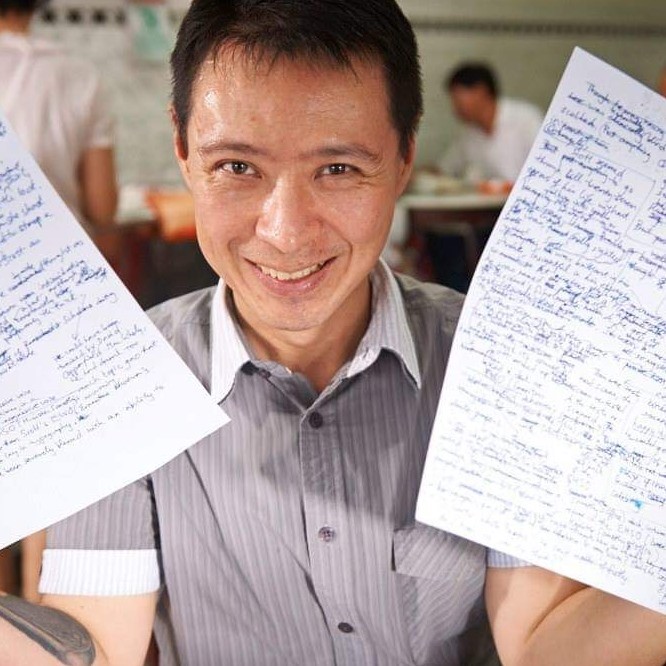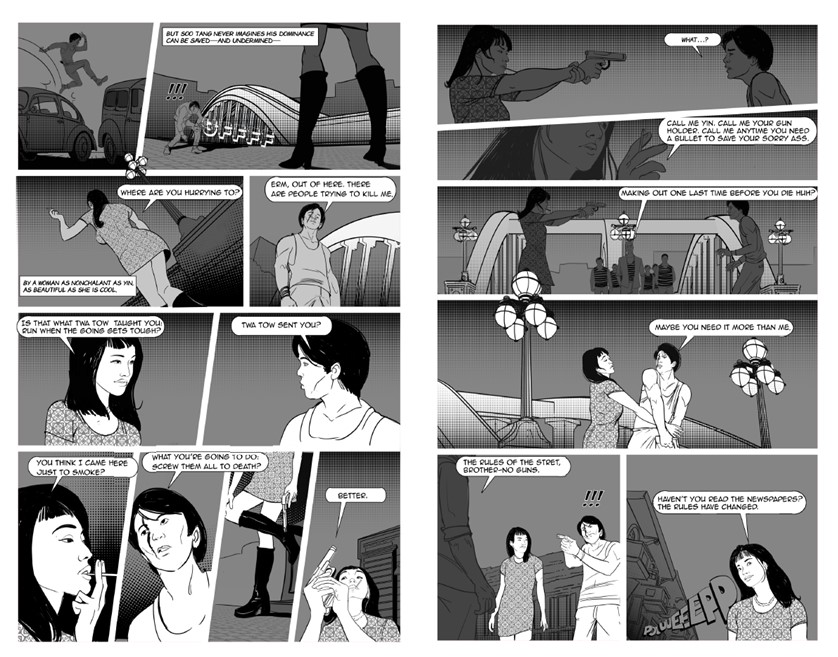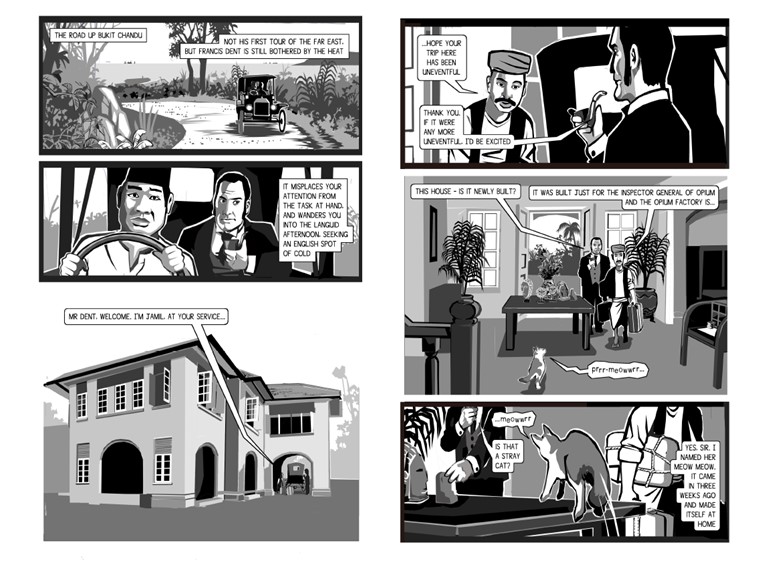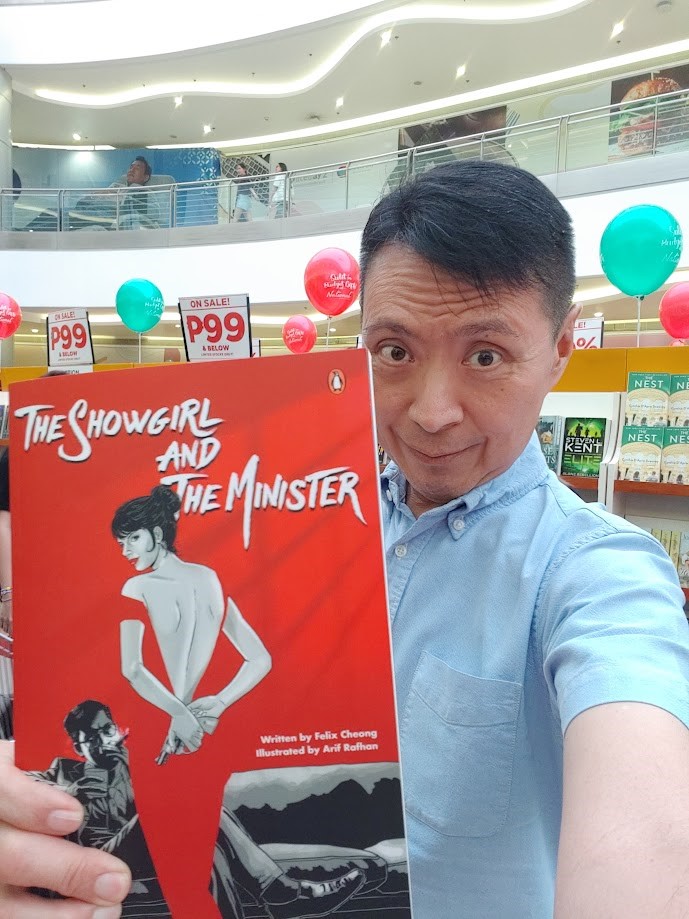Crafting Stories from History
From research to reimagination, the library and archives are shaping Felix Cheong’s creative processes.
By Jolynn Lim
18 August 2025
Author and poet Felix Cheong combines historical events with creative storytelling to create works that blur the lines between fact and fiction. As a writer, Cheong recognises the value of historical records to writers and poets in their creative process. “Historical records can take your writing – and your reader – into alleys and cul-de-sacs you might not have thought of,” he said.
 Felix Cheong with some notes for his graphic novels. Courtesy of Felix Cheong.
Felix Cheong with some notes for his graphic novels. Courtesy of Felix Cheong.This was the case with Cheong’s upcoming graphic novel, A Mild Case of Mass Hysteria, which is set to be published in 2026 by Penguin Random House SEA. The novel revolves around the Koro epidemic in Singapore in 1967. Koro is a psychiatric disorder where individuals believe their penises are retracting into their abdomen, causing intense panic.1
In the graphic novel, one of the narratives involves a secret society member named Soo Tang. Cheong had originally intended for the character to fall in love with a member of the Red Butterfly gang – a notorious all-female gang, better known as Ang Hor Tiap, that had been active in the 1960s and 1970s.2
Cheong had planned for Soo Tang to be rebuffed romantically by the female gang member, leading him to develop Koro. However, while researching, Cheong came across a newspaper article about “gun molls” – female companions or associates of gangsters who carry weapons and serve as runners.3
This led Cheong to embark on a different story arc for Soo Tang, one focusing on the emotional dynamics between Soo Tang and his gun moll to explain his Koro symptoms. “Although the existence of gun molls was reported in 1958 […] and my story takes place nine years later, the Freudian overtone of a woman whose job is to carry a gangster’s gun is too good to resist,” he noted.
 Pages from A Mild Case of Mass Hysteria. Courtesy of Penguin Random House SEA.
Pages from A Mild Case of Mass Hysteria. Courtesy of Penguin Random House SEA.Digging in the Library and Archives
Cheong’s research process often begins with an initial trawl of NewspaperSG, the National Library’s online resource of current and historic Singapore and Malaya newspapers, using the key word search function to identify anything that might be of interest to his book project.
“After mind mapping and identifying subtopics, I’d let my curiosity lead me where it will, be it archival photos or interview recordings in NAS [National Archives of Singapore], or books or journals in the Lee Kong Chian Reference Library.”
While researching for a new graphic, Opium: A War Story, about the anti-opium movement, Cheong came across a 1980 photograph on NAS’ Archives Online of a colonial bungalow on Pepys Road that served as the residence of the Inspector General of Opium (he supervised the opium factory at the foot of Bukit Chandu).4
“Up to that point, I had not come across any mention of such a government position as the Inspector General of Opium. That immediately opened another rabbit hole for me to burrow into and upon further digging, I found a name – F. Dent – but little else about him. That again allowed my imagination to fill in the gaps and create a backstory for the villain,” he said. Opium: A War Story is scheduled to be published in 2027 by Penguin Random House SEA.
 Pages from Opium: A War Story. Courtesy of Penguin Random House SEA.
Pages from Opium: A War Story. Courtesy of Penguin Random House SEA.Another work of historical fiction that Cheong is working on is a graphic novel tentatively titled Out of the Night that Covers Me, inspired by the Hokkien-Teochew Riots, also known as the Great Riots of 1854, or Five Catties of Rice Riots.5
Cheong had found out about the riots in Infopedia, the National Library electronic encyclopedia of articles on Singapore’s history, culture, people and events. When he read that the riots killed more than 500 people and destroyed around 300 homes, he was intrigued and investigated further. This inspired him to write a graphic novel based on the riots. “I’d keep digging until I have exhausted every detail, or until I am exhausted, whichever comes later,” he said.
To Cheong, the research is the most rewarding part of working with historical materials. “Perhaps it’s my training as a reporter, or the fact I teach research writing in the university. But I actually find the detective work invigorating and relaxing at the same time,” he said.
Not the End
Sometimes the research trail leads to a dead end, however, this is not necessarily a bad thing. “That’s also where the most creative part of the process kicks in, […] I allow my imagination to roam and fill in the blanks.”
Cheong’s 2023 graphic novel, The Showgirl and the Minister, was based entirely on one such research dead end. The graphic novel revolves around an incident involving the former Chief Minister Lim Yew Hock who disappeared for 10 days in June 1966 while he was the Malaysian High Commissioner to Australia. At the same time, a 19-year-old stripper also went missing. When Lim eventually turned up, he could not clearly account for what had happened to him.
 Felix Cheong at the launch of The Showgirl and the Minister, 2023. Courtesy of Felix Cheong.
Felix Cheong at the launch of The Showgirl and the Minister, 2023. Courtesy of Felix Cheong.Despite his best efforts, Cheong was not able to uncover what had taken place in those 10 days. However, this became an opportunity for Cheong to spin a tale of espionage around the two disappearances, working in the Vietnam War and Konfrontasi (also known as the Indonesia-Malaysia Confrontation6), which was a period of armed conflict between Indonesia and Malaysia from 1963 to 1966. (Cheong documented his research in an epilogue in the book.)
Cheong’s advice to other creatives who are interested in using historical records for their work: “Be curious, be prepared to spend time and be ready to let your imagination go.”
Notes
-
Koro Study Team, “The Koro “Epidemic” in Singapore,” Singapore Medical Journal 10, no. 4 (December 1969): 234, http://smj.sma.org.sg/smjmainpages/1004main.html. ↩
-
“Ex-gangster: Today’s Girl Gangs Have Nothing Better to Do,” New Paper, 21 November 2010, 2–3. (From NewspaperSG) ↩
-
“Police Have ‘Gun Molls’ on Record,” Singapore Standard, 24 September 1958, 1 (From NewspaperSG) ↩
-
Ronni Pinsler, “31J Pepys Road, Colonial Mansion Built As Residence for the Inspector General of Opium,” 1980, photograph. (From National Archives of Singapore, Media - Image no. 19990007463 - 049) ↩
-
Yong Chun Yuan, “Hokkien-Teochew Riots (1854),” in Singapore Infopedia. National Library Board Singapore. Article published 2016. ↩
-
Marsita Omar, “Indonesia-Malaysia Confrontation,” in Singapore Infopedia. National Library Board Singapore. Article published 2008. ↩

